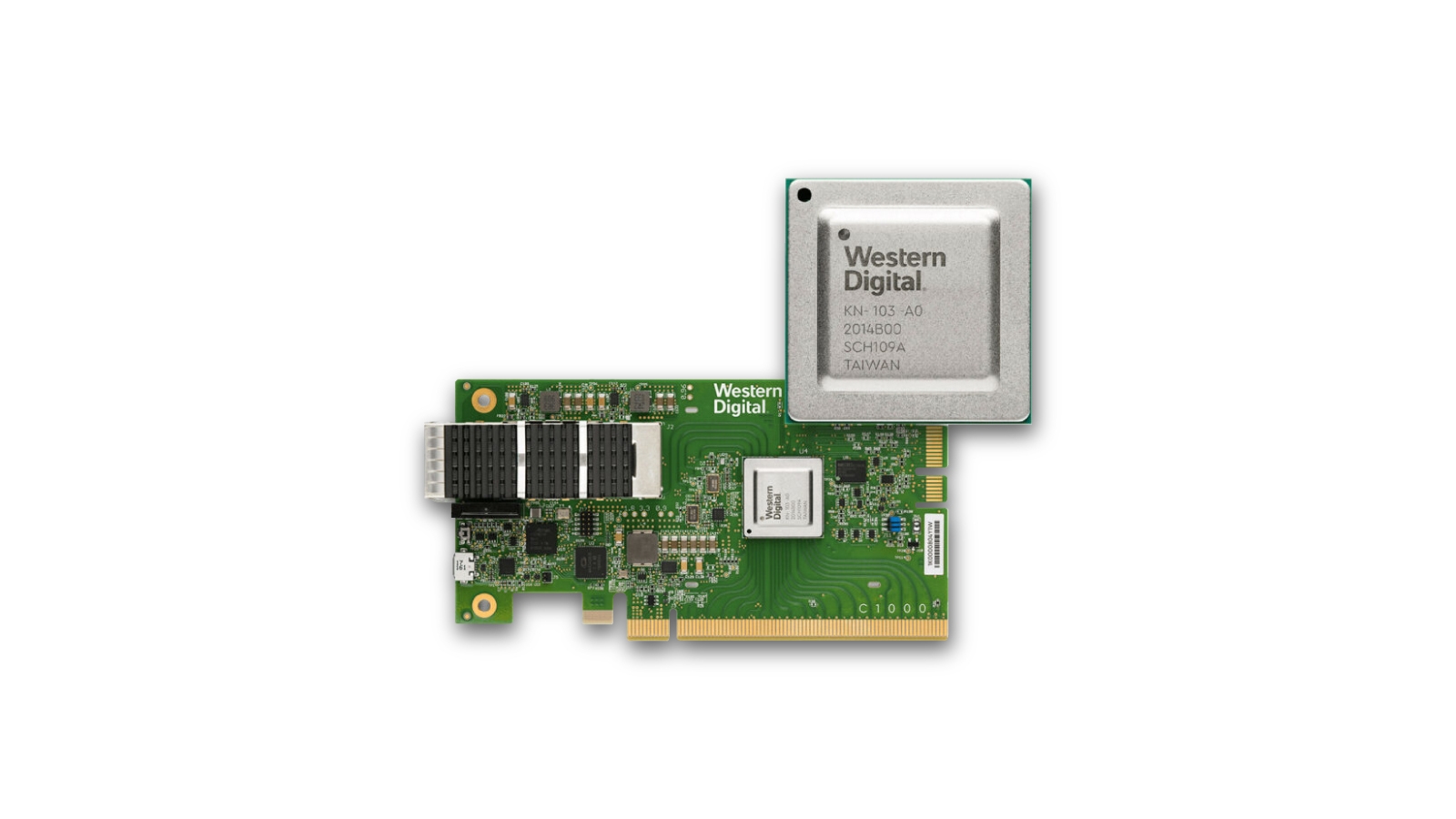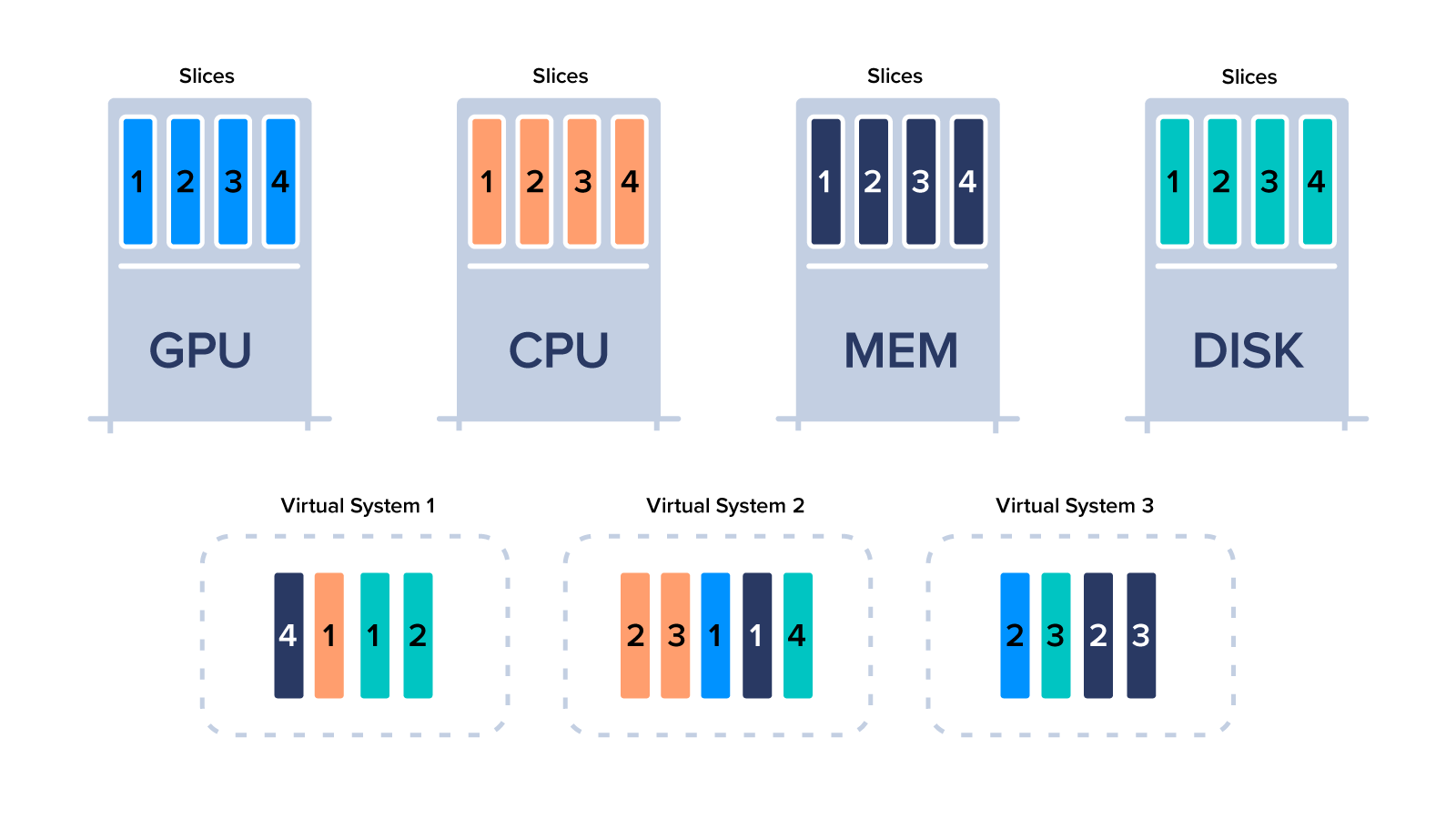
What is NVMe
NVMe has been around for over a decade and has been a staple in computers for connecting important components via PCIe. Early storage devices like hard drives and modern solid-state drives (SSD) were connected through a SAS or SATA connection. SATA SSDs were a great start to developing stronger and faster storage solutions but catered to users still stuck in the disk drive era using the same SAS protocol. Enter NVMe. The acronym NVM stands for non-volatile memory, referring to NAND flash memory like SSDs, USBs, and memory cards. NVM Express (NVMe) was optimized for flash storage that allows host hardware and software to access high levels of parallelism to communicate with modern memory, reducing input and output overhead as well as increasing read and write performance at drastically lower latency.
NVMe-oF: Fibre Channel and RDMA
One big issue was that NVMe and other traditional means of connecting components were inherently tied to the host system. NVMe-oF or Non-Volatile Memory express over Fabric is a network storage protocol that allows users to take full advantage of NVMe through a fabric channel such as Ethernet, Fiber, or InfiniBand as its name might suggest. With NVMe-oF, dedicated JBOF (just-a-bunch-of-flash) can take advantage of NVMe speeds and communicate using Remote Direct Memory Access (RDMA), which bypasses the CPU and OS to increase speeds even more.

Western Digital offers their RapidFlex A1000 NVMe-oF ASIC Device, which enables a direct PCIe connection between NVMe server racks and requires very little TDP and no RAM at all via their RapidFlex C1000 NIC. The RapidFlex C1000 is powered by the RapidFlex A1000 ASIC Device supporting 100Gbs of Ethernet and both RoCEv1 and RoCEv2 protocols. InfiniBand is a top-of-the-line RDMA networking protocol used in enterprise applications but converged Ethernet is also a great option used for NVMe-oF. So is speed the only thing good about NVMe-oF? Not quite…
Disaggregating Storage
NVMe-oF delivers local-like connectivity between storage and applications on large servers from a network switch enabling consolidation in the data center of applications that usually depend on direct-attached storage (DAS). With DAS-like local speeds and broader bandwidth applications will be able to run on shared networked storage instead. NVMe-oF is significantly more efficient at storage and makes the entire architecture more parallel, avoiding bottlenecks in modern applications as well as adding flexibility to a data center’s storage infrastructure. By connecting multiple racks of storage via NVMe-oF to a switch, reading and writing data to the cloud become quicker than ever. With RDMA and over-ethernet capabilities, files can be accessed remotely like the cloud rivaling local-like speeds.
Looking to invest in an NVMe-oF Storage Solution to start your disaggregation?
Learn More about Exxact's Western Digital NVMe Storage Solutions
The future of disaggregating can expand to other components such as accelerators, memory, and more. This is called Composable Disaggregated Infrastructure where resources such as CPU, memory, GPUs, etc. are partitioned into resource pools. A software will orchestrate the allocation of compute resources to a multitude of applications executed on the CDI. As a result, servers can have the flexibility of the cloud, the value of virtualization, and the performance of bare metal.

CDIs operate similar to a Virtualization Machine where a single computer partitions its resources into a number of instances. However, a CDI’s components can be distributed in real-time as workloads increase and decrease, optimizing workloads as they progress. Resources can be allocated on demand and returned to the resource pool dynamically. CDIs offer a great environment (or environments) for multi-tenant users for the ultimate shared computer infrastructure.
Exxact offers solutions from Western Digital NVMe-oF SSD storage servers for faster data transfers or to start developing your very own Composable Disaggregated Infrastructure. Contact us to learn more.
Have any Questions?
Contact Exxact Today

What is NVMe-oF? Benefits and Possibilities
What is NVMe
NVMe has been around for over a decade and has been a staple in computers for connecting important components via PCIe. Early storage devices like hard drives and modern solid-state drives (SSD) were connected through a SAS or SATA connection. SATA SSDs were a great start to developing stronger and faster storage solutions but catered to users still stuck in the disk drive era using the same SAS protocol. Enter NVMe. The acronym NVM stands for non-volatile memory, referring to NAND flash memory like SSDs, USBs, and memory cards. NVM Express (NVMe) was optimized for flash storage that allows host hardware and software to access high levels of parallelism to communicate with modern memory, reducing input and output overhead as well as increasing read and write performance at drastically lower latency.
NVMe-oF: Fibre Channel and RDMA
One big issue was that NVMe and other traditional means of connecting components were inherently tied to the host system. NVMe-oF or Non-Volatile Memory express over Fabric is a network storage protocol that allows users to take full advantage of NVMe through a fabric channel such as Ethernet, Fiber, or InfiniBand as its name might suggest. With NVMe-oF, dedicated JBOF (just-a-bunch-of-flash) can take advantage of NVMe speeds and communicate using Remote Direct Memory Access (RDMA), which bypasses the CPU and OS to increase speeds even more.

Western Digital offers their RapidFlex A1000 NVMe-oF ASIC Device, which enables a direct PCIe connection between NVMe server racks and requires very little TDP and no RAM at all via their RapidFlex C1000 NIC. The RapidFlex C1000 is powered by the RapidFlex A1000 ASIC Device supporting 100Gbs of Ethernet and both RoCEv1 and RoCEv2 protocols. InfiniBand is a top-of-the-line RDMA networking protocol used in enterprise applications but converged Ethernet is also a great option used for NVMe-oF. So is speed the only thing good about NVMe-oF? Not quite…
Disaggregating Storage
NVMe-oF delivers local-like connectivity between storage and applications on large servers from a network switch enabling consolidation in the data center of applications that usually depend on direct-attached storage (DAS). With DAS-like local speeds and broader bandwidth applications will be able to run on shared networked storage instead. NVMe-oF is significantly more efficient at storage and makes the entire architecture more parallel, avoiding bottlenecks in modern applications as well as adding flexibility to a data center’s storage infrastructure. By connecting multiple racks of storage via NVMe-oF to a switch, reading and writing data to the cloud become quicker than ever. With RDMA and over-ethernet capabilities, files can be accessed remotely like the cloud rivaling local-like speeds.
Looking to invest in an NVMe-oF Storage Solution to start your disaggregation?
Learn More about Exxact's Western Digital NVMe Storage Solutions
The future of disaggregating can expand to other components such as accelerators, memory, and more. This is called Composable Disaggregated Infrastructure where resources such as CPU, memory, GPUs, etc. are partitioned into resource pools. A software will orchestrate the allocation of compute resources to a multitude of applications executed on the CDI. As a result, servers can have the flexibility of the cloud, the value of virtualization, and the performance of bare metal.

CDIs operate similar to a Virtualization Machine where a single computer partitions its resources into a number of instances. However, a CDI’s components can be distributed in real-time as workloads increase and decrease, optimizing workloads as they progress. Resources can be allocated on demand and returned to the resource pool dynamically. CDIs offer a great environment (or environments) for multi-tenant users for the ultimate shared computer infrastructure.
Exxact offers solutions from Western Digital NVMe-oF SSD storage servers for faster data transfers or to start developing your very own Composable Disaggregated Infrastructure. Contact us to learn more.
Have any Questions?
Contact Exxact Today
